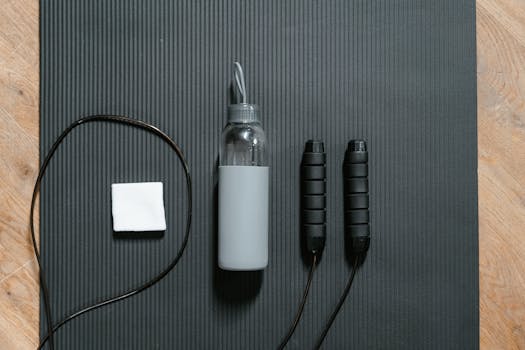
Introduction to Strength Training at Home

Strength training is an essential aspect of fitness that helps build muscle, improve metabolism, and enhance overall health. For beginners, starting a strength training regimen at home can be an accessible and effective way to achieve fitness goals. In this guide, we will explore the fundamentals of strength training at home, including key exercises, tips for success, and sample workout routines.
Understanding Strength Training

Strength training involves using resistance to induce muscular contraction, which builds strength, endurance, and muscle mass. This can be achieved through various means, including free weights, resistance bands, or bodyweight exercises. As a beginner, it’s crucial to understand the benefits of strength training, which include increased muscle strength, improved bone density, enhanced metabolic rate, and better overall functional fitness.
Essential Equipment for Home Strength Training

While strength training can be done using just your body weight, having some basic equipment can enhance your workouts. Common equipment for home strength training includes:
- Dumbbells: Versatile weights that can be used for a variety of exercises.
- Resistance Bands: Lightweight and portable, these bands add resistance to bodyweight exercises.
- Stability Ball: Great for core workouts and balance exercises.
- Pull-Up Bar: Useful for upper body strength exercises.
Key Exercises for Beginners

As a beginner, focus on mastering fundamental exercises that target major muscle groups. Here are some key exercises to include in your routine:
- Squats: Target the legs and glutes.
- Push-Ups: Strengthen the chest, shoulders, and triceps.
- Lunges: Great for leg and core strength.
- Planks: Focus on core stability.
Creating a Balanced Workout Routine

When designing your strength training routine, aim for a balanced approach that targets all major muscle groups. A sample weekly workout plan for beginners might look like this:
- Day 1: Upper Body (Push-Ups, Dumbbell Press, Tricep Dips)
- Day 2: Lower Body (Squats, Lunges, Glute Bridges)
- Day 3: Core (Planks, Bicycle Crunches, Russian Twists)
- Day 4: Rest or Light Cardio
- Day 5: Full Body (Combination of Upper and Lower Exercises)
Tips for Success in Home Strength Training

To maximize your success in strength training at home, consider the following tips:
- Start slowly and focus on proper form to avoid injury.
- Progressively increase weights or resistance as you become stronger.
- Stay consistent with your workouts and set achievable goals.
- Incorporate rest days to allow your muscles to recover.
Conclusion

Strength training at home is an effective way for beginners to improve their fitness levels. By understanding the basics, utilizing essential equipment, and following a balanced workout routine, anyone can achieve their strength training goals. Remember to stay committed and enjoy the journey to better health.






